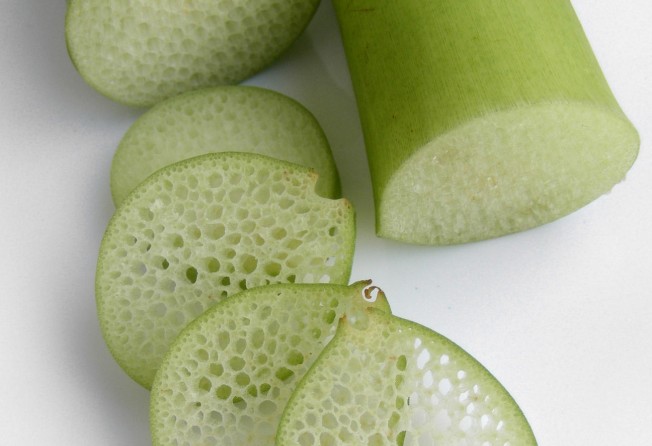Seasons: hole food
Susan Jung

Bac ha is an unusual vegetable. If you look at a cross section of it, you'll see small holes that run the length of the vegetable, which makes it obvious that it's some sort of stem. The holes carry water and nutrients to the leaves and other parts of the plant, which is one of the many varieties of taro.
As with all parts of any taro plant, bac ha should not be eaten raw because it contains calcium oxalate, the crystals of which can cause irritation to the skin and mucous membranes, making them swell and itch.
I've read recipes that suggest using celery if bac ha is not available, but the textures of the two are very different. While celery retains its crunchiness and flavour even when cooked, bac ha has a spongy texture that absorbs the taste of whatever ingredients it's cooked with.
If you've ever eaten Vietnamese sour seafood soup, you'll have tasted bac ha. The seafood (such as catfish, shrimp and/or clams) is cooked with water or broth and sliced bac ha, pineapple, mushrooms and fresh tomato. It's seasoned with tamarind pulp, which gives the soup its deliciously sour flavour, as well as fish sauce and a bit of sugar. At the last minute, fresh bean sprouts are added to give the soup a nice crunch.